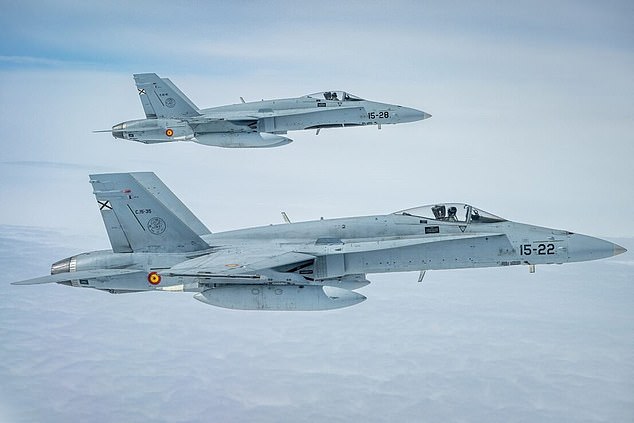NATO planes have scrambled to intercept Russian spy planes as the alliance conducts military exercises in the Baltic Sea, officials said.
Several Russian planes have been intercepted in recent days by three NATO fighter squadrons, formed by Germany, Italy and Spain, which took off from bases in Latvia, Poland and Lithuania, respectively.
Disturbing images shared by NATO Air Command showed Eurofighter Typhoon and F-18 jets flanking what appeared to be Ilyushin-IL20 spy planes and Antonov AN-12 cargo planes flying over the Baltic Sea.
“We demonstrated our capabilities, readiness and our strong commitment to collective deterrence and defense,” said Gen. James Hecker, commander of Allied Air Command.
“Every day, allied fighter jets fly over the Baltic Sea,” he added.
It comes as a NATO source said last month that scrambles by alliance aircraft to intercept Russian aircraft approaching allied airspace over the Baltic Sea region increased by 20% to 25% in the first quarter of 2024.
F-18 planes of the Spanish Air Force are seen flying over the Baltic to respond to a Russian plane
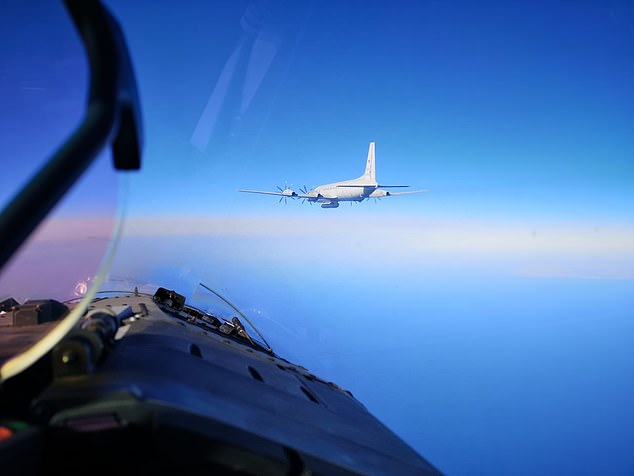
A Russian aircraft seen from the cockpit of a NATO fighter jet heads to intercept an Ilyushin-IL20M spy plane.
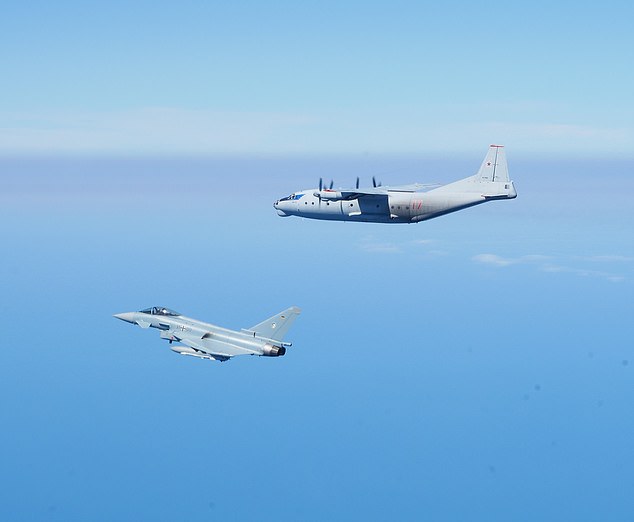
A German Luftwaffe Eurofighter Typhoon is seen flanking a Russian Antonov-AN12 cargo plane over the Baltic Sea.
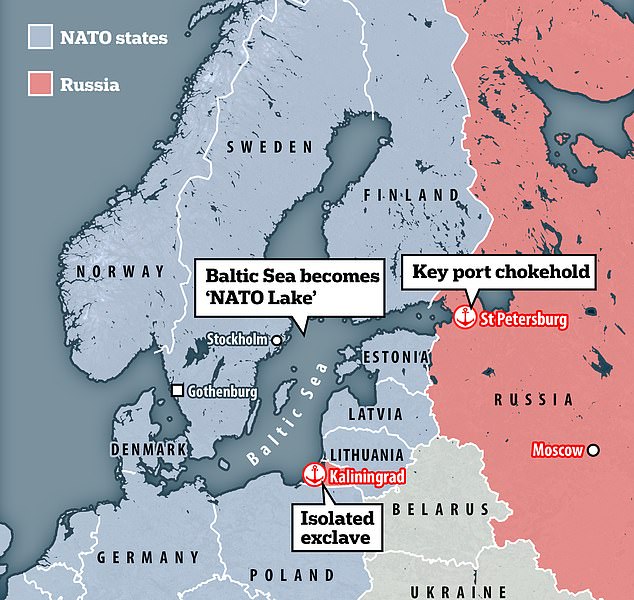
Sweden has joined the BALTOPS exercises for the first time after joining the security bloc, a move that some analysts say turned the Baltic Sea into a “NATO lake” in a blow to the Kremlin.
A statement from NATO Air Command said an increase in Russian activity was expected in the skies over the Baltic Sea in June, with NATO ships taking part in planned exercises.
The Baltic Operations Exercise, or BALTOPS, will take place from June 7 to 20 and will see more than 50 warships, 25 aircraft and 9,000 personnel from 20 countries embark on maritime exercises.
These exercises are an annual event, but this year’s exercises are said to be the largest of their kind, due to growing security concerns in the Baltic region following the Russian invasion of Ukraine.
It comes as Sweden joins the exercises for the first time after joining the security bloc, a move that some analysts say turned the Baltic Sea into a “NATO lake” in a blow to the Kremlin.
“Year after year, BALTOPS delivers credible results in building our collective defense capability and the strength, agility and cohesion of the alliance,” Vice Adm. Thomas Ishee, commander of the U.S. 6th Fleet and of NATO Naval Support Forces. -Sailing conference in Klaipeda, Lithuania.
BALTOPS 2024 will bring the largest concentration of amphibious and minehunting forces in the history of the exercise, according to a US Navy statement, in which Ishee told reporters: “If Russia’s brutal aggression in Ukraine has shown us anything, it is that you have to be able to adapt to the combat environment, so that is an approach for me and both my US and NATO commands.” “.
Meanwhile, in Russia the large-scale exercises are seen as evidence of more threatening behavior by NATO.
Before the start of BALTOPS, the head of the FSB Border Service, Vladimir Kulishov, stated that NATO had increased intelligence activities in member countries bordering Russia and said that the alliance was “drafting scenarios for carrying out military operations against Russia”.
And one of Russia’s leading experts on the Baltics, Nikolai Mezhevich, gave an alarming interview to Moscow’s Tsargrad in which he stated that Western politicians were “ready to start World War III in the same place where the first and second wars began.” second”, referring to the possibility of a NATO attack on the Russian enclave of Kaliningrad.
“It is very possible that the exercises are a kind of cover for a real military deployment, which will then move on to the attack phase on Kaliningrad,” he said.
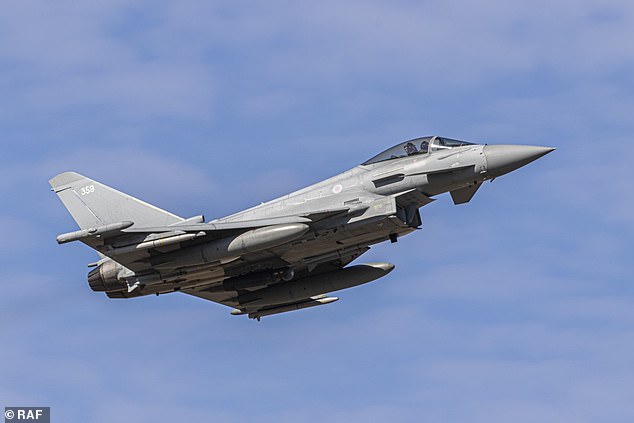
The Eurofighter Typhoon is among the most agile fighter aircraft in the world and is in service in nine countries.
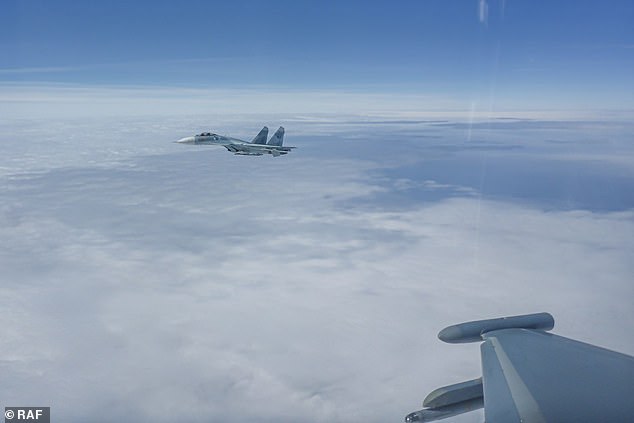
A Russian Su-27 is seen flying off the wing of an RAF aircraft
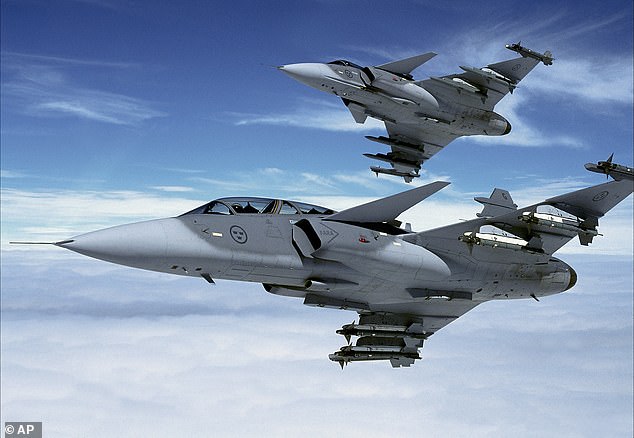
Pictured: Two Swedish Air Force JAS-39 Gripen fighter jets in close formation. Sweden to bring state-of-the-art submarines and fleet of highly capable Gripen fighter jets to NATO forces (File)
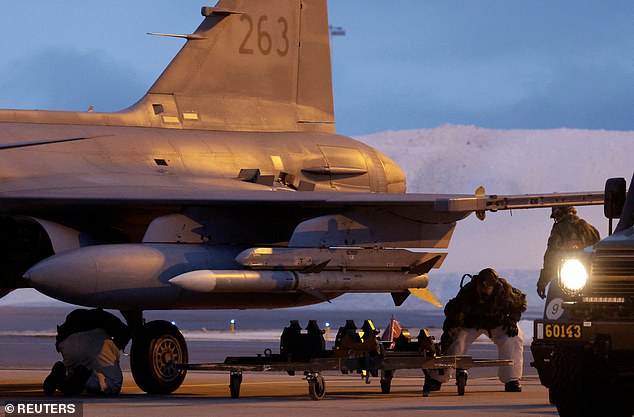
A Swedish aircrew prepares a JAS Gripen fighter jet for takeoff at Kallax Air Base, Sweden, March 4, 2024.
Last year, NATO said allied warplanes took off more than 300 times to intercept Russian military aircraft, with most incidents occurring over the Baltics.
Since then, however, NATO has noted a change in the mix of Russian aircraft spotted near allied territory, the source, who spoke on condition of anonymity, told Reuters.
Unlike in the past, Western pilots today rarely detect Russian fighter jets or strategic bombers approaching Allied airspace, and most interceptions now involve surveillance planes or sometimes transport planes, the source said. .
It is not clear why Russia has changed its behavior, but Moscow presumably needs its bombers and fighter jets in Ukraine as the fighting there has been growing in intensity, the source added.
NATO says Russian military aircraft have a history of failing to transmit a transponder code indicating their position and altitude, failing to file a flight plan and failing to communicate with air traffic controllers.
Following Russia’s full-scale invasion of Ukraine in February 2022, the Western military alliance increased its presence along its eastern flank, sending more fighter jets there and establishing ground-based air defenses.
NATO also deployed additional fighter jets to Romania after repeated Russian attacks on Ukrainian infrastructure near the alliance’s southeastern border.
Earlier this year, NATO launched its largest exercise since the Cold War, involving some 90,000 troops.
The exercises are intended to rehearse the execution of NATO’s regional plans – the first defense plans the alliance has drawn up in decades – detailing how it would respond to a Russian attack.


